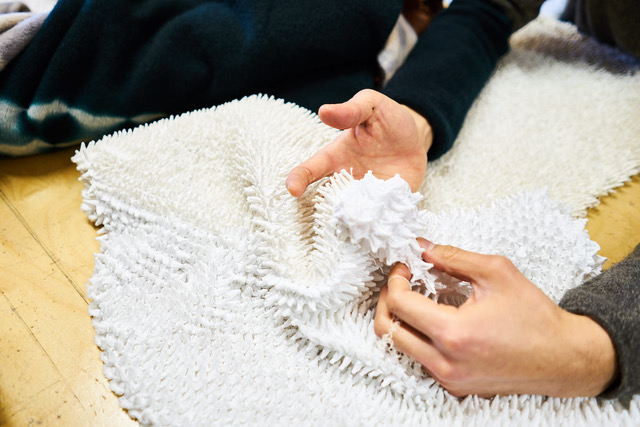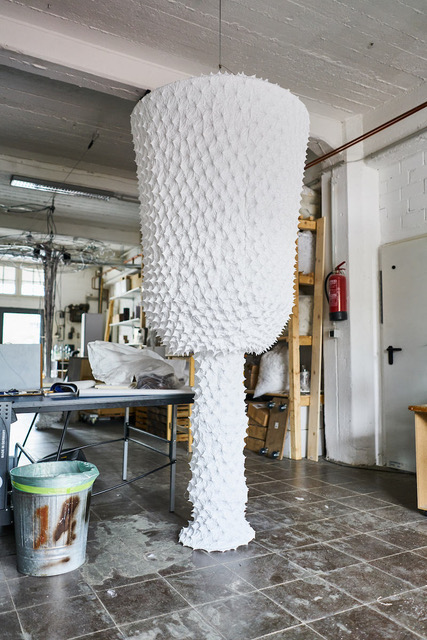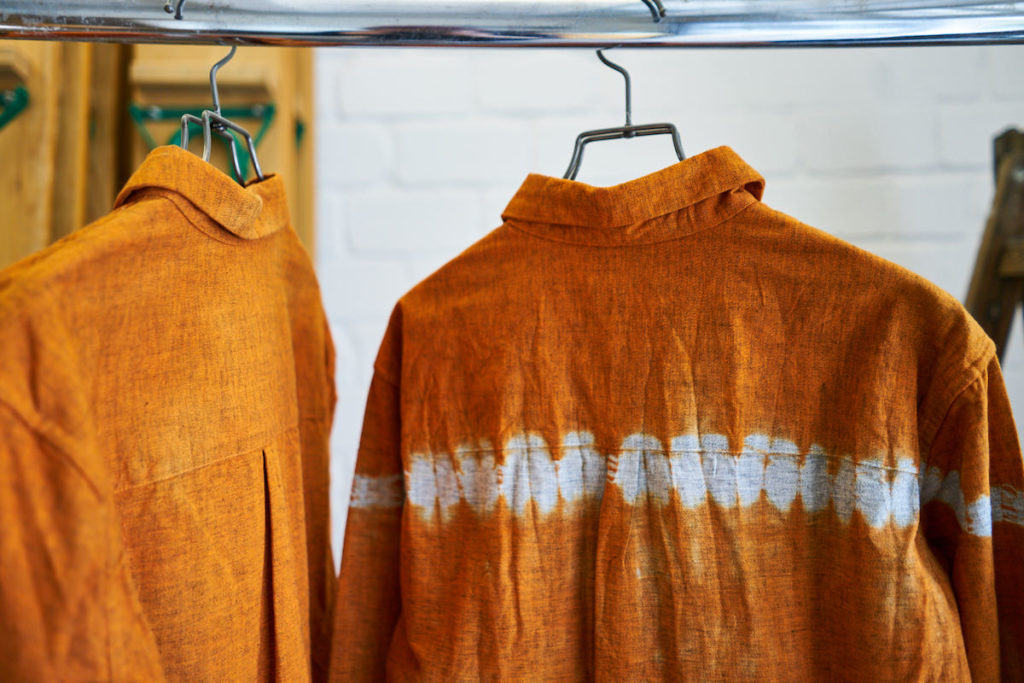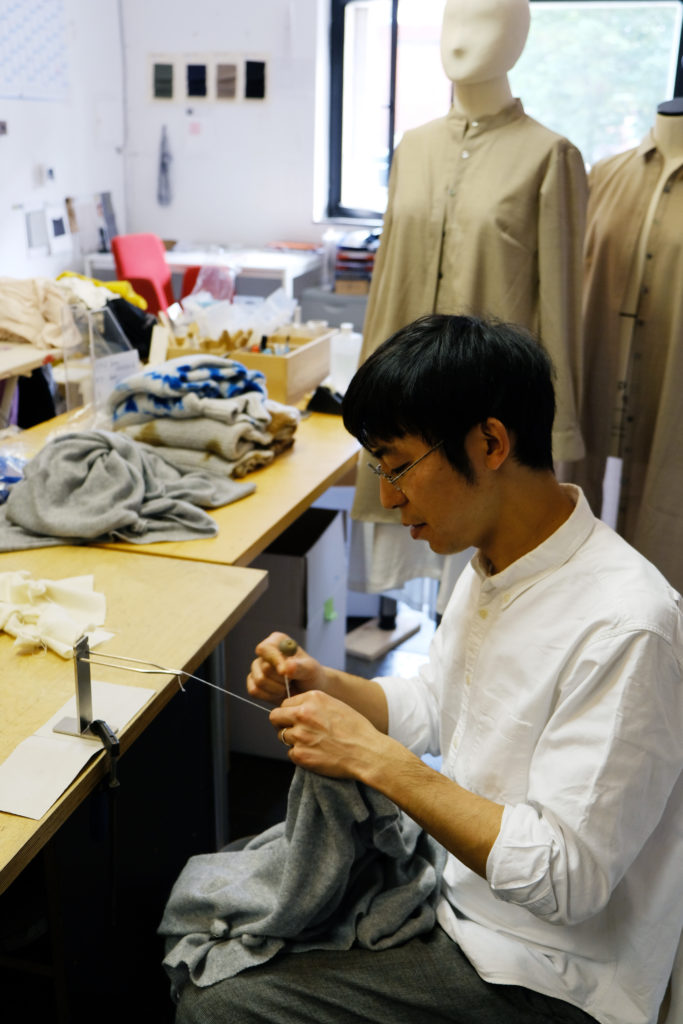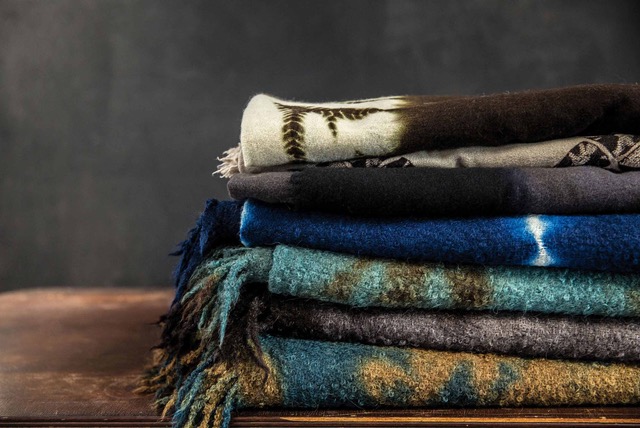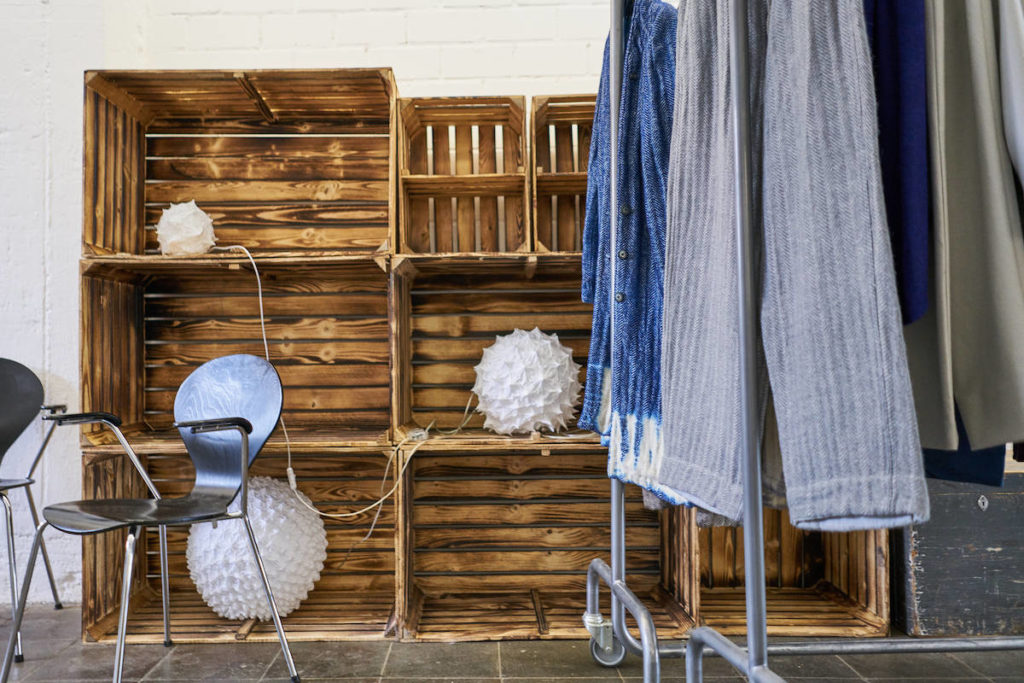A centuries-old Japanese craft is given a new look in a Flingern backyard. Unique textiles are created today where standard bread used to be baked in the past.
Consum – the name crowning the entrance to the yard in gigantic pixels of tile is a bit misleading. In fact, this backyard is outside of the world of commerce, the world of hardware stores and car washes that the area around Ronsdorfer Straße is known for. It is true that the baking factory used to be located here, producing a steady stream of bread rolls. Today, however, the tenants earn their living with art, music, photography, and fashion.
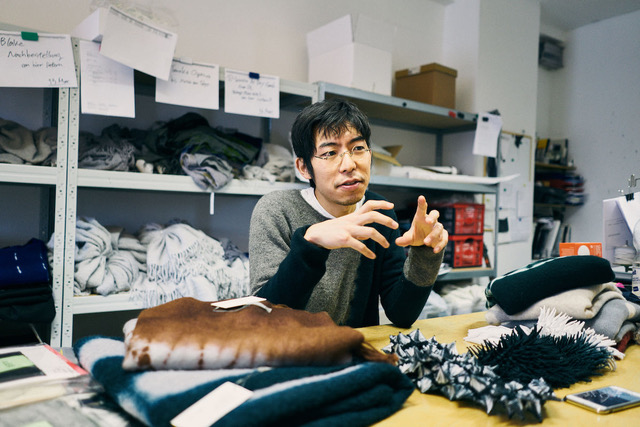
One of them is Japanese designer Hiroyuki Murase, whose Suzusan label has its home on the ground floor of one of the monument-protected brick buildings. Inspiring creative chaos rules in these three rooms with their full-height shelves brimming with fabrics, a large cutting table, and jumpers, skirts, and coats crowded on clothes racks. Hiroyuki is 38 years old. The irregularly dyed hem of his shirt is peeking out from under his olive-green cardigan. “Our Suzusan collection is based on the traditional Japanese shibori dyeing technique,” he explains.
Specialists speak of reservation dyeing when fabrics are partially covered or tied off before dyeing so that the dye cannot reach all parts of the cloth, leaving behind patterns. “Though related to the batik technique, the shibori method is a lot more complex and multi-faceted. Japanese shibori not only ties off the fabric. It also folds, rolls, presses, or stitches it together.” Hiroyuki brings out a piece of cloth holding a string of firmly wrapped pieces. “It’s a very elaborate craft,” he says, with the ghost of a proud smile flashing on his face.
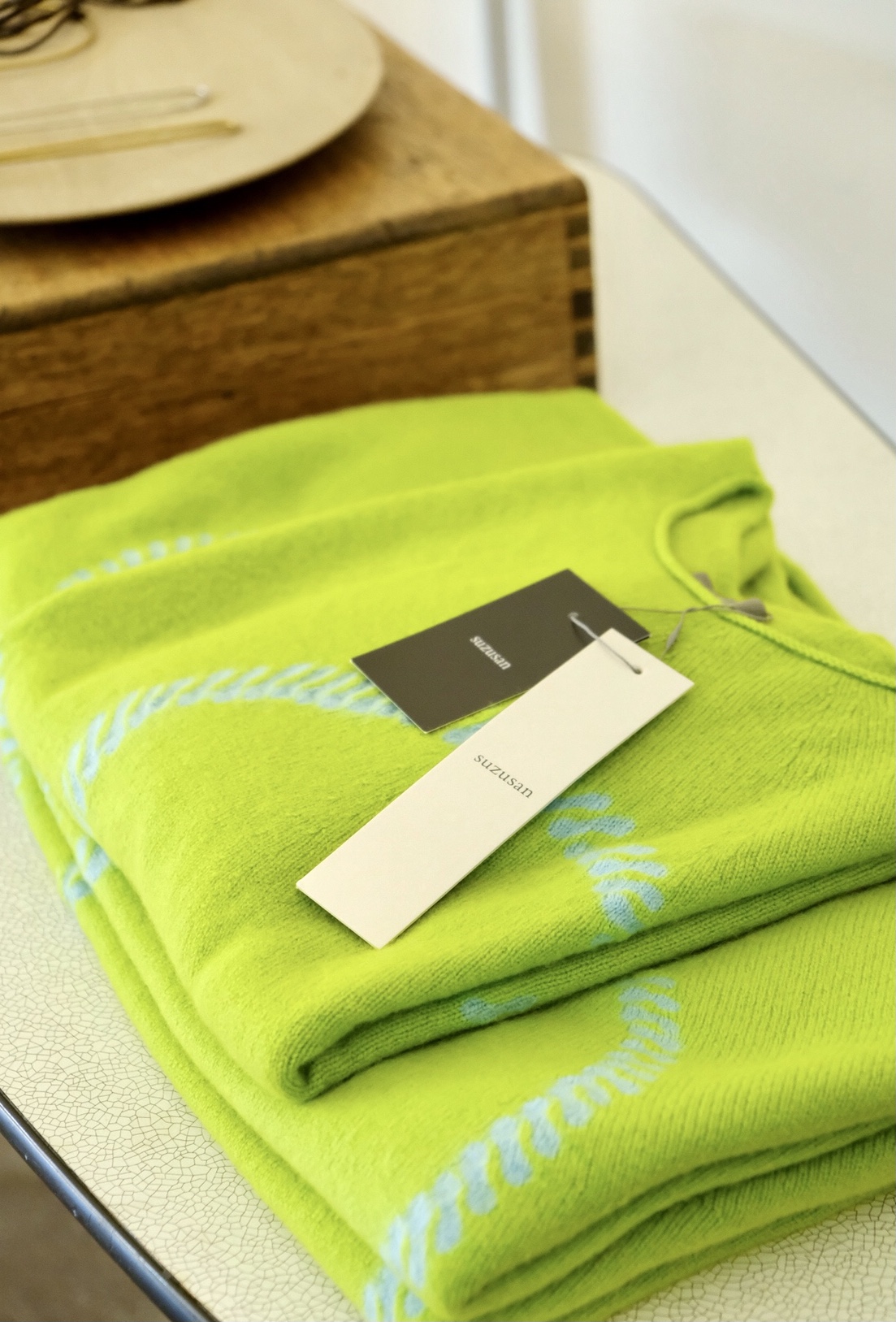
There are as many as 200 sub-disciplines to shibori, and they can be combined as well. Thanks to this virtually unlimited universe of pattern options, Hiroyuki Murase has never run out of ideas since he founded Suzusan in 2008.
He may bring abstract patterns in a bright blue and pink to life on light grey cashmere, or apply well-placed figurative illustrations, such as those of a stylised crane or a turtle. Both of these animals represent long lives in Japanese mythology.
All of his drafts share the irregularity called “wabisabi” by the Japanese. The term describes an imperfect beauty that only nature can create. After all, it is never possible to fully control the result when dipping a soft cashmere jumper with tied-off parts into a vat of dye bit by bit. The result is always a surprise, and in any case one of a kind.
Hiroyuki came to Düsseldorf for his art. He studied sculpture at the Art Academy. His family lives in Arimatsu near Nagoya, 9000 kilometres away from the Rhineland. Hiroyuki Murase has his collection produced there by his family’s own company.
The great shibori variety was even nearing extinction back in Arimatsu. “50 years ago, 10,000 craftspeople were working in my hometown. But this method takes time, the old shibori masters were dying, and the technique seemed to vanish slowly,” the designer says.
“By the time I founded Suzusan, we only had 200 craftspeople left.” The number has grown considerably again since, and in particular younger people are interested in shibori. Nearly twenty of them help Hiroyuki’s family with their production on site.
”It’s a bit crazy, but I’ve only learned to truly value our traditions after leaving Japan.
Hiroyuki MuraseDesigner & founder Suzusan
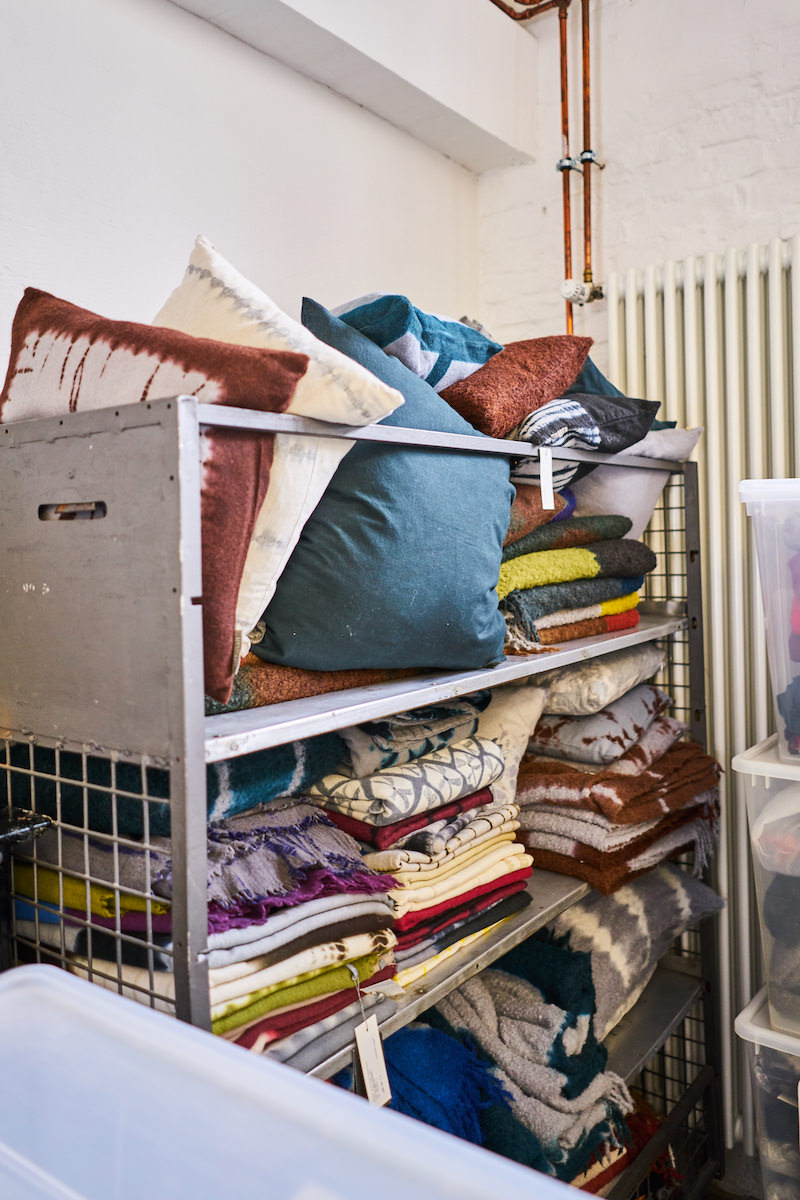
His father Hiroshi has been working in the textile industry for 45 years. Hiroyuki’s brother and sister have entered the business as well. Suzusan now offers about 120 different pieces for men and women, selling to the best international fashion stores. On top of this, Hiroyuki Murase designs blankets and pillows. In December 2020, he opened his own store as well. Wishing to sell his line not only in Berlin, New York, and Tokyo, but also right there in Düsseldorf, he set up a store of 70 square metres right next to his studio – for Suzusan and for his friends.
A perfect networker, this smart Japanese designer not only sells his own collection there. He has collected a group of like-minded people who produce unique pieces exclusively as well.
The delicately crocheted jewellery of designer Stephanie Schneider, the patterned Hirota glasses and sustainable game leather bags by Six Coup de Foudre perfectly supplement Murase’s fashion. A bit of consumerism has returned to the Flingern backyard after all, though the cheap standard bread rolls have been replaced by valuable unique pieces.
Not everything used to be better back then.
Text: Ilona Marx | Fotos: Suzusan & The Dorf – The Mag Robin Hartschen



